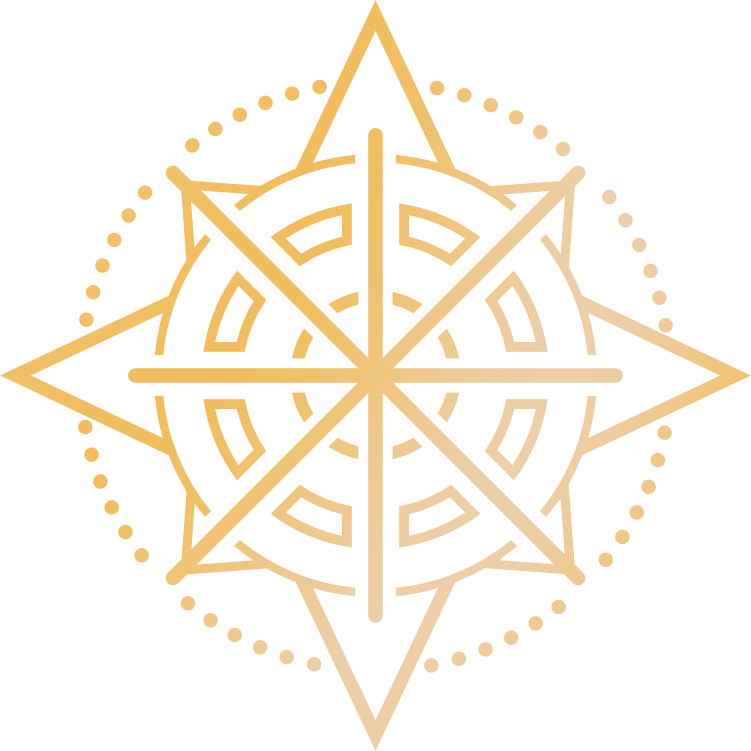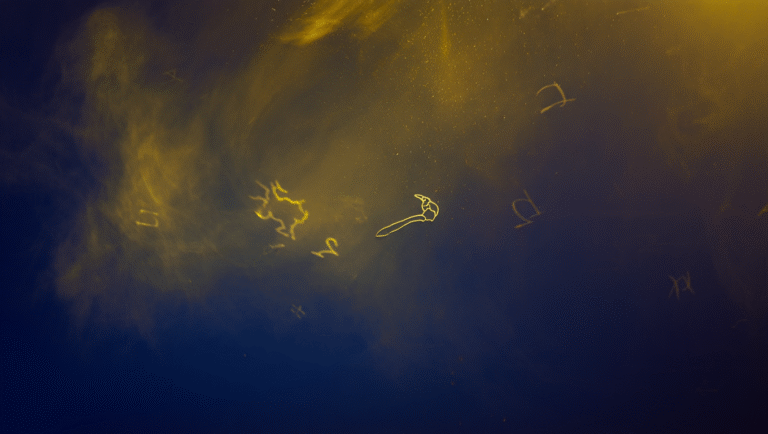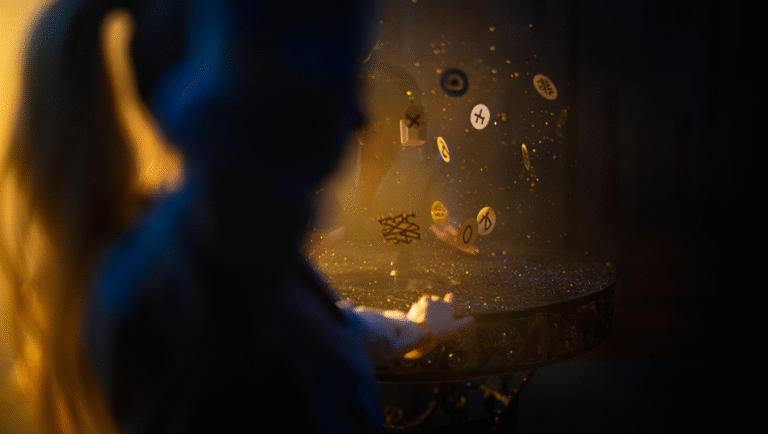I Ching: Asking the Right Questions
Ever heard of the I Ching, but felt too intimidated to try it? You’re not alone. It’s an ancient Chinese divination text—thousands of years old—with a reputation for being deep, cryptic, and, well, a bit confusing. But here’s the good news: you don’t have to be a scholar to start using the I Ching for guidance. With a little prep and the right mindset, you can start asking meaningful questions and getting surprisingly actionable answers—in about 15 minutes.
Why Try the I Ching?
Maybe you’re at a crossroads in your career, relationships, or personal growth. Maybe you’ve tried tarot, journaling, or meditation, but want something different: a blend of logic, intuition, and ancient wisdom. The I Ching (also known as the Book of Changes) is perfect for this—it’s not about predicting the future, but helping you see your current situation from a fresh angle, tap into your own logic and intuition, and make smarter choices.
“It’s like having a wise, slightly cryptic mentor who answers your questions with metaphors—sometimes annoying, always thought-provoking.”
The Case: My First I Ching Reading (and What I Learned)
Years ago, I was stuck between two job offers. I’d read about the I Ching but never tried it. I grabbed an affordable set of yarrow sticks (spoiler: coins work just as well), asked, “What do I need to consider to make the right choice?”—and got Hexagram 29: “The Abysmal (Water).” The reading nudged me to focus on my fears instead of obsessively comparing salary and perks. It didn’t give me a yes/no answer, but it did help me realize what mattered most. That’s typical of the I Ching: it shines a light on your situation, not just the surface.
How to Ask the Right Questions: Quick Guide
The biggest mistake beginners make? Asking questions that are too vague, too specific, or yes/no.
Instead, aim for:
- Open-ended questions (“What do I need to understand about…?”)
- Process-focused questions (“How can I best approach…?”)
- Exploratory questions (“What energy is at work in…?”)
Not sure how to phrase your question? Try these templates:
- “What is the best way to navigate [my situation]?”
- “What should I be aware of regarding [relationship/job/decision]?”
- “What is the underlying energy around [my goal/concern]?”
Avoid: “Will I get the job?” “Should I break up with X?” “Is this the right time to move?” (The I Ching is not a Magic 8-Ball.)
15-Minute I Ching Ritual: What You’ll Need
- 3 coins (any kind, but if you want a dedicated set: Check price on Amazon)
- I Ching book or app (My go-to: The I Ching or Book of Changes by Richard Wilhelm)
- Notebook or paper for your question and results
- Optional: A quiet space, a candle, or calming music
Step-by-Step: Your First I Ching Reading
- Clarify your question. Write it down in an open, process-oriented format.
- Settle your mind. Take a few deep breaths. (No incense or chanting required, unless you want to!)
- Toss your coins six times. Each toss creates a line of your hexagram:
- Heads-heads-tails: Old Yang (moving yang/solid line, changing to yin)
- Heads-tails-tails: Young Yang (solid line)
- Tails-tails-heads: Old Yin (moving yin/broken line, changing to yang)
- Tails-heads-heads: Young Yin (broken line)
Start from the bottom up. Write down each line as you go.
- Build your hexagram. After six tosses, you’ll have a stack of lines—this is your hexagram.
- Look up your hexagram. Use your book or app to find its meaning. If you rolled any “changing” lines (old yang or old yin), note them—they hint at how your situation may shift.
- Read and reflect. The I Ching’s language can be poetic and obscure. Focus on the overall imagery and advice, not literal fortune-telling.
Quick Reference Table: Coin Toss Meanings
| Coin Combo | Line Type | Symbol | Changing? |
|---|---|---|---|
| Heads-Heads-Tails | Old Yang | Solid (—) | Yes (changes to Yin) |
| Tails-Tails-Heads | Old Yin | Broken (- -) | Yes (changes to Yang) |
| Heads-Tails-Tails | Young Yang | Solid (—) | No |
| Tails-Heads-Heads | Young Yin | Broken (- -) | No |
Best Beginner I Ching Tools (2024)
| Name | Key Feature | Size/Material | Price Range | Amazon Link |
|---|---|---|---|---|
| Traditional Brass I Ching Coins | Classic, tactile feel | Set of 3, brass | $7–$15 | Check price on Amazon |
| Wilhelm I Ching Book | Most respected translation | Paperback, 800+ pages | $20–$30 | See today’s deal |
| I Ching Cards by Tuan | Visual, easy for beginners | Deck of 64 cards | $18–$25 | View on Amazon |
| I Ching App: Yi Jing Oracle | Instant readings, mobile-friendly | iOS/Android app | Free–$4.99 | Try on App Store |
Pros & Cons: Should You Buy Physical Coins or Go Digital?
- Physical coins: Tactile, ritualistic, great for mindful moments. Downside: easy to lose, not very portable.
- Books: Deepest interpretations, but hefty. Takes time to navigate.
- Apps: Fast, portable, easy for beginners. Can feel less “special.”
- Cards: Visual, easy to use, great for quick draws. Some purists say it’s not “traditional.”
For most beginners, a set of coins and a good translation (like Wilhelm’s) is the sweet spot. If you’re always on the go, try an app to start.
15-Minute Checklist: Your I Ching Quickstart
- Pick your question and write it down
- Gather coins, book/app, and something to record your results
- Get comfortable—no distractions
- Toss coins six times, bottom to top, noting each line
- Look up your hexagram and any changing lines
- Read the interpretation slowly; jot down any insights
- Spend 2–3 minutes reflecting before taking action
Extra Resources
- I Ching Beginner’s Guide at OnlineClarity
- Britannica overview: I Ching
- Wilhelm I Ching Book
- Yi Jing Oracle App for iOS
Final Thoughts: Making I Ching a Practical Tool
The I Ching isn’t about magic, fate, or instant answers. It’s about pausing, questioning your assumptions, and seeing your choices in a new light. The more honest you are with your questions, the more helpful its answers become.
And honestly? Sometimes the best advice comes from stepping outside your usual patterns—even if it feels a little weird at first. The I Ching’s wisdom is timeless, but your approach can be as modern (or minimalist) as you want.
Ready to give it a try? Grab some coins, a good book (or app), and let yourself be surprised.
Some links in this post may be affiliate. You pay the same price, and this blog may earn a small commission—which helps keep the lights on and the tea flowing. Thanks for your support!







